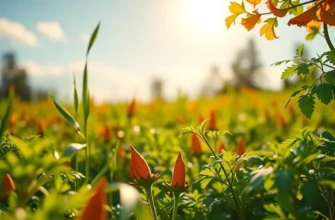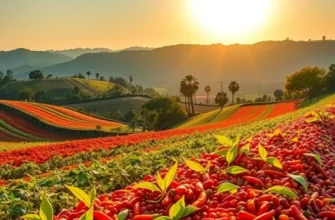Tea, a simple infusion of leaves and water, transcends boundaries, cultures, and centuries. The rituals surrounding tea drinking vary widely—from the refined elegance of Japanese tea ceremonies to the lively social gatherings of British afternoon tea. Each culture brings its unique story to this cherished beverage, steeped in history and flavored by its people. Join us as we embark on a journey across continents to discover the diverse customs and deep-seated traditions that celebrate tea.
Japan: The Art of the Tea Ceremony

The Japanese tea ceremony, or ‘chanoyu’, is more than just a way to enjoy tea. It is a profound ritual involving choreographed movements that have been perfected over centuries. This ceremony uses matcha, a finely ground green tea, emphasizing simplicity and grace.
At its core, the tea ceremony reflects the philosophy of wabi-sabi, a concept centered on finding beauty in imperfection and profundity in earthiness. Each stage is an expression of mindfulness, meant to calm the mind and transport participants into a zen-like state.
Everything in a tea ceremony has purpose, from the choice of teacups to the specific gestures used. The host spends years mastering these skills, creating a sense of peace and harmony. The utensils, including the tea bowl (chawan), tea scoop (chashaku), and tea whisk (chasen), are chosen meticulously for their ability to enhance the aesthetic experience. Even the surroundings are carefully considered, often in a chashitsu, a room designed specifically for the ritual, with simple, beautiful decor to focus the minds of all involved.
The process begins with a ritual cleaning of the utensils, symbolizing respect towards the participants and the ritual itself. Each movement is a study in precision, underscoring the deep respect for harmony and balance. The host, often dressed in traditional kimono, moves with deliberate, flowing motions, blending practicality with artistry.
As the water heats, participants are invited to focus on the subtle sound of the kettle, savoring silence. When the matcha is prepared, it is presented with the bowl turned to the most beautiful side, an action that highlights the intention of offering and receiving gratitude.
Sipping matcha is just the beginning of a deeper connection as guests are encouraged to engage their senses fully. They are invited to smell the aroma, savor the flavor, and appreciate the tactile quality of the pottery. These details are where mindfulness turns sipping into an immersive experience.
The ceremony’s philosophy aligns with the broader cultural value of mindfulness in communication and interaction. Incorporating such mindful eating practices into everyday life, as seen here, can help nurture more profound connections to both food and the people around us.
Ultimately, the Japanese tea ceremony not only celebrates tea but also enriches the spirit. It’s an invitation to slow down, breathe, and draw inspiration from simplicity, teaching us to embrace tranquility in today’s overwhelmingly complex world.
Morocco: A Minty Delight

In Morocco, tea is more than a beverage; it is an emblem of hospitality and conviviality. Moroccans cherish the tradition of serving mint tea, known as atay. This fragrant brew is steeped in history and symbolism, reflecting the warmth and openness of its people. Every visitor to a Moroccan home is sure to experience this tradition, served in graceful, decorative glasses that elevate the tea’s appeal.
The art of Moroccan tea preparation begins with the perfect balance of three simple ingredients: green tea, fresh mint leaves, and a generous amount of sugar. Green tea, usually Chinese Gunpowder tea, forms the aromatic and slightly astringent base. Fresh mint, often the locally loved Nana mint, adds a cooling, refreshing quality that contrasts the robust tea. Finally, sugar rounds out the blend, creating a sweetly invigorating drink that is both soothing and stimulating.
A quintessential aspect of Moroccan tea culture is the dramatic presentation. The person preparing the tea, known as the shaybi, pours it from a significant height. This ritualistic pouring, traditionally from a long-spouted silver teapot, oxygenates the liquid, producing a delicate foam at the surface. The frothy top is not merely for aesthetics; it signifies that the tea has been properly aerated, enhancing both its flavor and visual allure.
The presentation extends to the selection of tea glasses. These are often ornately patterned with intricate designs, embodying Moroccan artistry. The transparent vessels allow sippers to admire the vivid green hue, a visual prelude to the sensory experience.
Tea drinking in Morocco is inherently a communal affair. It is common for small groups to gather around, engaging in animated conversations and leisurely exchanges of stories. Every glass is a bridge, fostering connections and moments of shared joy. The act of sharing tea is an invitation to slow down, to cherish the simple pleasures of company and conversation.
For Moroccans, tea is served multiple times a day, often accompanying meals or as a standalone social event. This practice is not merely a reserved tradition but a lived experience of unity and warmth, reflecting a cultural ethos that values togetherness.
For those interested in global food cultures, understanding how different societies have influenced and adapted culinary practices can enhance appreciation for these rituals. Exploring these culinary roots opens doors to appreciating the culinary influences shaped by trade over centuries. Discover more about these fascinating culinary influences that have shaped cuisines around the world.
The Moroccan mint tea ceremony is more than just refreshment. It is a cultural emblem, offering anyone who partakes a sip of tradition, connection, and a vivid taste of Moroccan hospitality.
Final words
Tea encompasses far more than the warm drink enjoyed in solitude or in casual company; it is woven into the very fabric of cultures and traditions worldwide. From the elaborate rituals of Japan to the vibrant and hospitable practices of Morocco, tea drinking rituals invite us to slow down and appreciate the moment. Each sip carries stories of history, community, and art, reflecting the values and identities of those who partake. As you brew your next cup, consider the journey across the globe that this humble leaf undertakes—a journey filled with rich traditions, flavors, and memories waiting to be rediscovered.








